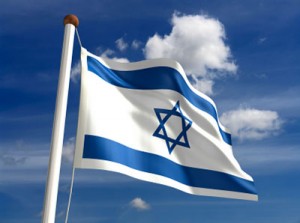 Netanyahu and the IDF Spokesman were fast to condemn the launch of the drone from Lebanon, but chose not to name Hezbollah�as the culprit.
Netanyahu and the IDF Spokesman were fast to condemn the launch of the drone from Lebanon, but chose not to name Hezbollah�as the culprit.A reexamination of Israeli declarations after the interception of the unmanned aircraft sent from Lebanon on Thursday reveals an interesting fact: All Israeli statements by Prime Minister�Benjamin Netanyahu�andIDF�Spokesman Brig. Gen. Yoav Mordechai, whether on camera or written, omit one important issue - who actually launched the drone. The media added the names of the usual suspects:�Hezbollah, and in some of the reports,�Iran.
The omission of those responsible for the launch of the drone from the official statements on Thursday is probably not coincidental. Netanyahu and the IDF spokesperson talked of "an unmanned aircraft launched from�Lebanon," without naming the guilty party. The prime minister even deviated from his usual custom of threatening an Israeli response to the breach of its sovereignty (the drone was shot down above Israeli territorial waters, ten kilometers west of Haifa and the prime minister's helicopter was forced to make an emergency landing in the north of Israel, until the threat passed). This time, Netanyahu saw it fit to say only that that Israel "views the attempt to breach our borders as very grave."
Despite the lack of official explanations to the wording of Thursday's statements, it seems that those responsible for the launching of the drone were the Iranian Revolutionary Guards in Lebanon. Iran has a long list of grievances with Israel: not only does it consider Israel to be behind the assassinations of the nuclear scientists in Tehran and the cyber attacks on their nuclear program, it has added a relatively new accusation concerning the assassination of the commander of the al-Quds regiment of the�Revolutionary Guards�in Lebanon, near the Syrian border last month. The reliability of this accusation is yet unclear; some reports attributed the assassination to the Syrian opposition.
The launching of the last drone from Lebanon, in October 2012, was eventually believed to be an act by the Revolutionary Guards with Hezbollah as the host, in Lebanon. In that operation, which was defined as a success by Hezbollah and Iran, the drone was intercepted in the north of the Negev after flying in Israeli skies for nearly half an hour. Hezbollah leader Hassan Nasrallah claimed responsibility for the launch, but admitted it was an Iranian-produced drone. One can assume Hezbollah filled the same role this time as well. Still, since the drone was shot down in an early stage, before it actually flew over Israeli territory, Hezbollah and Iran remained silent in the aftermath. Sources in Lebanon on Thursday even went as far as to deny involvement in the operation.
Apart from the unsettled score with Israel, it seems that Iran wished to openly demonstrate its potential ability to damage essential facilities in Israel, in a time when they are feeling the pressure of international sanctions surrounding their nuclear program, and when international cooperation is being considered in a move against its ally in Syria, Bashar Assad.
Nonetheless, one cannot be certain that the goal was necessarily the Israeli gas drilling facilities in the Mediterranean. If the drone was indeed intended to fly above the�Tamar facility�which was recently inaugurated, why did it fly south to the Haifa area, instead of taking a shorter south-western route, and avoid the risk of being shot down?
By Haaretz
The Iran Project is not responsible for the content of quoted articles.










